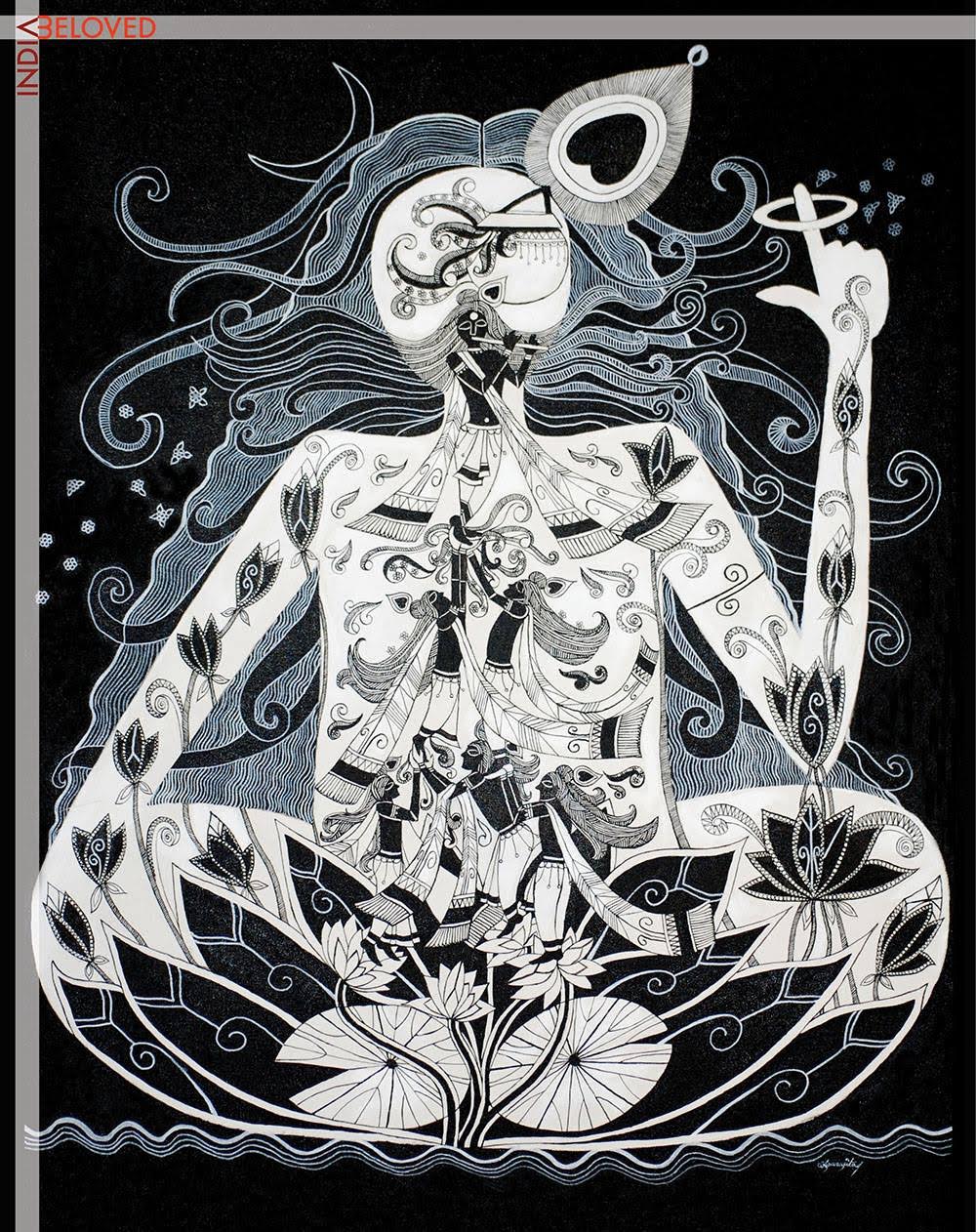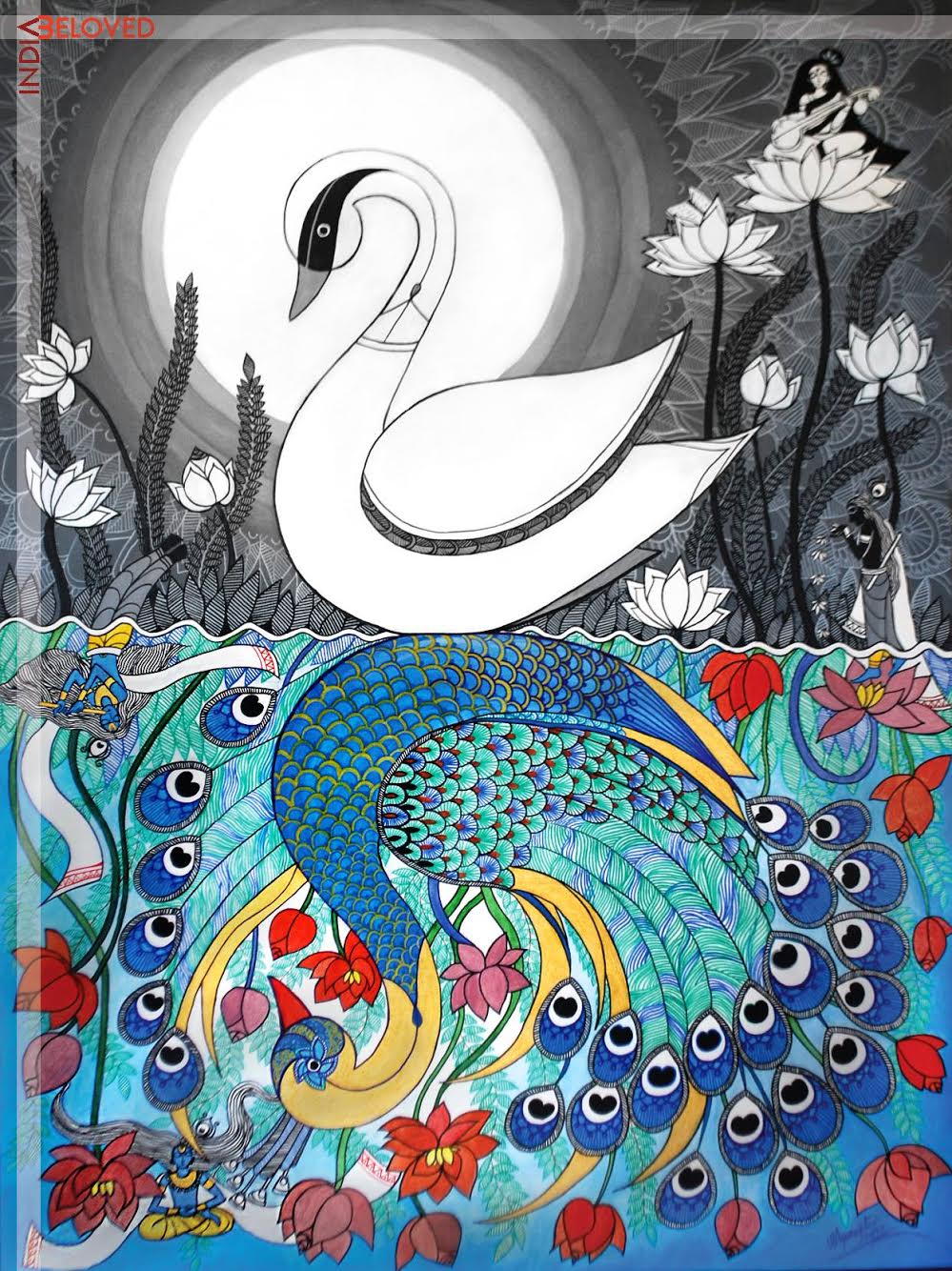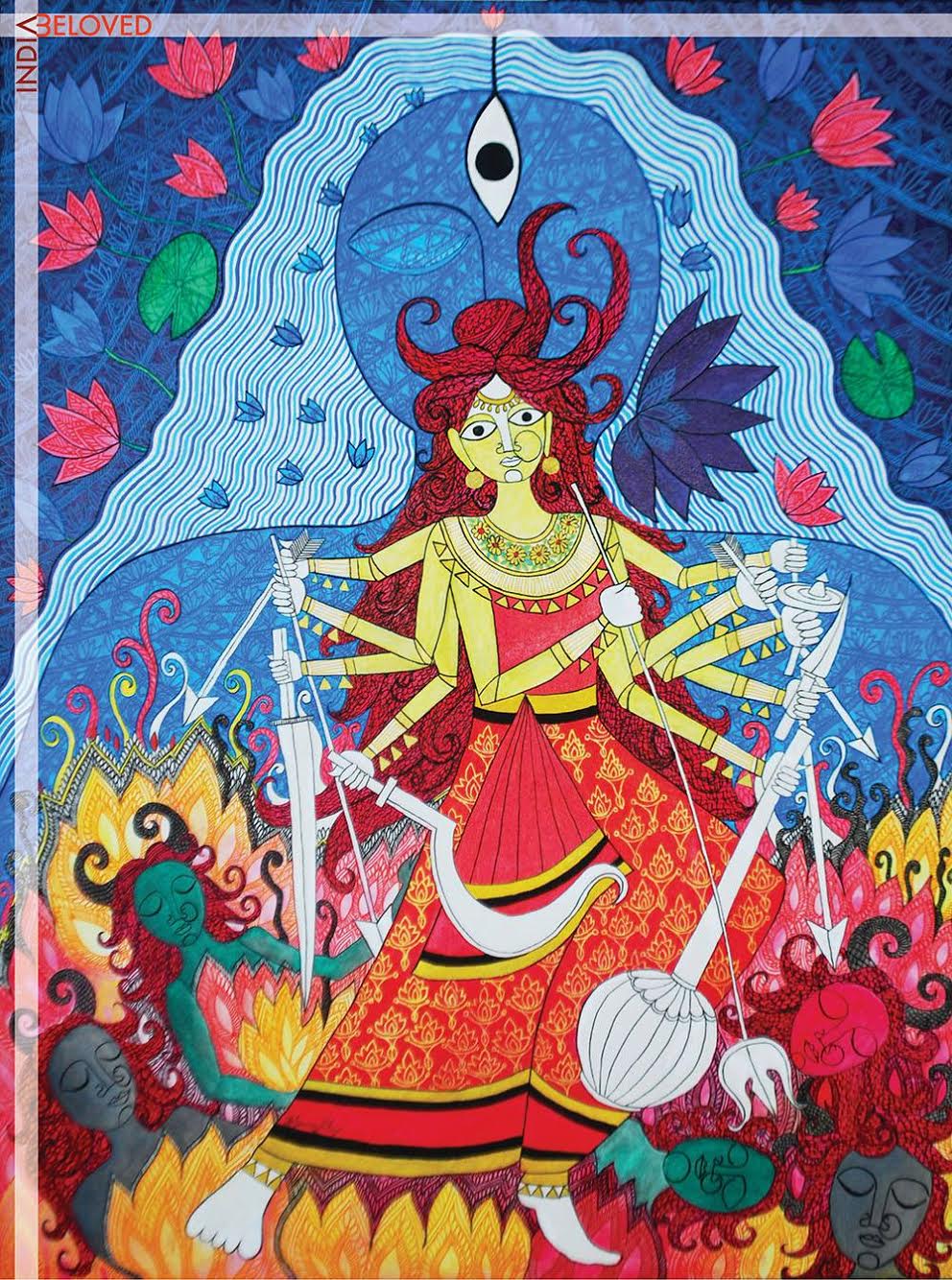
Aparajita Barai’s intricate folksy art aims to re-stir Indian spirituality and philosophy by digging out ancient meanings that are now lost in the face of jingoism
She lives in Auroville, the suburban mecca of conscious living and the spiritually awakened. Her art is reflective of her state of mind, intricate, folksy details that are very Indian in nature, peppered with spiritual references that often invoke Hindu mythology. In fact, Aparajita Barai states that her mission is to re-stir Indian spiritual philosophy and present it with her personal quest. She aims to dig out ancient meanings and possibilities that have gotten lost in the face of ceremonial practices.
Also the founder of Beloved India, an organisation that aims to re-look at Indian culture and re-establish its understanding through, art, design, campaign and research, Barai completed her graduation from National Institute of Design (NID) and has a master’s degree in Design for Communication from
University of Westminster, London. It was during her time there that the idea of Beloved India was born. “As the initial outputs of that plan, I started creating artworks. And that is how exploring creativity I entered design and from design I came to art,” she says.
Her art is an output for Beloved India, the most important aim of which is to act as a bridge between the ancient and the modern. “To replace dead rituals by re-exploring the connotations. To connect design and culture, recognising both as problem-solving endeavours. To aspire, connect, replace and evolve,” she says.
Barai draws inspiration from the Madhubani style and the songs of Rabindranath Tagore, her first series was called, One. “It explored the concepts behind different deities. Now I am focusing on just one deity, “KRISHNA”. This allows me more opportunity to look closer, read, think, feel and immerse myself.” She feels that there is a spiritual existence that interlinks all things and emotions, creativity naturally taps into it. “Art is more than just skill set. The more one learns to cut off the noise in life, the more the tune that flows through every being becomes heard. And the more one can draw inspiration.”
Check out some of her work below.

MESSAGE AND THE MASTER: It is that space where an artist goes to looking for inspiration, a scientist goes to looking for clues, a prophet goes to looking for God, which is ourselves but a source much higher than us. It is through that darkness when one has accustomed oneself to find the way, does the illuminated self evolve from the dark. It is that intense union when a self becomes the higher self and every act becomes synchronised to perceive the message everywhere. It is a potential within all of us.

SWAN AND THE PEACOCK:One represents the seeking of truth, the other represents the celebration of life. One represents indulgence, the other represents withdrawal. Though the material and the spiritual world apparently appear to be in contrast to one another, deeper understanding of either reveals it as reflection. The peacock at the peak of his realisation looks at himself to find he is the swan. The swan when looks through the truth realises, he is indeed the divine celebration. Krishna represents the “realised one” who can plunge in and out to play and pray and offer devotion as Saraswati, the goddess of knowledge and truth is now revealed and the duality has become one.

TRUTH AND ALIGNMENT: Saraswati, the term means one who has found the essence of oneself. Saraswati stands for truth, the core inside each one where the fragrance is. She is shown as a simple village girl, who has gathered some lotuses and is on her way to make offerings. The Sun (representing the higher self guiding with energy), the “bindi” on her forehead (representing the awareness of her thoughts), the lotus held close to her heart (representing the purity in her emotions), and her steps (representing her actions) are all in alignment.

DURGAThe word Durga comes from “Durg” meaning fort. It is about building that strong base within own-self against which no evil thought can prevail. It is highly misunderstood when the evil is not considered within but outside. The evil here is shown as the projection of own-self being tracked and checked with an alert mind thus creating a calm outer self.

LIFE AND THE ACTOR: Krishna is known for leela, the attitude of playfulness towards life. In this, the realised being does not abstain from life realising its falseness rather embraces it and plays it like an actor. The difference being he does not associate the temporary joys and sorrows with his identity anymore. Yet he plays those parts passionately celebrating the colours and emotions. At the depth of his consciousness, he is the calm, silent observer to the act.
For more of Barai, click here